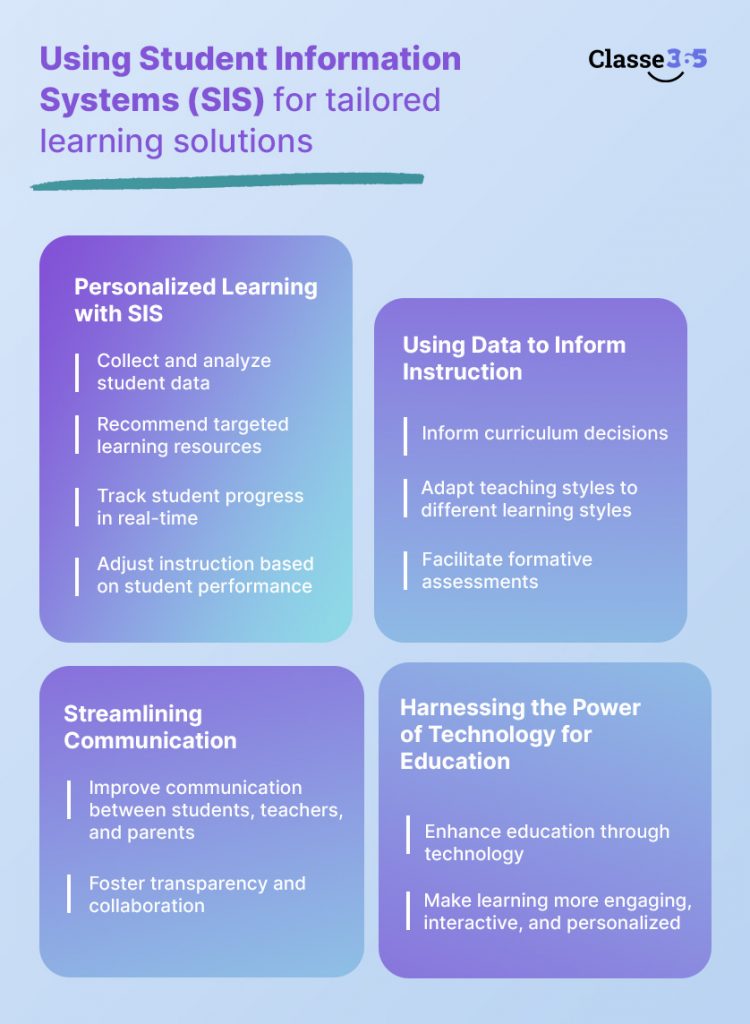Introduction
Did you know that 70% of students report feeling disengaged in class? This alarming statistic highlights the limitations of traditional education. However, with the advent of Student Information Systems (SIS), we have the potential to revolutionize learning by personalizing it to each student’s unique needs and learning styles.
The Importance of Tailored Learning Solutions
Personalized Learning is an educational approach that tailors learning to individual needs and learning styles. It focuses on student interests, strengths, and weaknesses, thereby increasing engagement, improving motivation, and enhancing academic performance. Traditional education, with its one-size-fits-all approach, often leaves students feeling bored or overwhelmed. Moreover, it poses a significant challenge for teachers trying to cater to diverse learners.
How Student Information Systems Aid in Personalized Learning
SIS are powerful tools that collect and store a vast amount of student data, including grades, attendance, demographics, standardized test scores, and learning styles. These systems can analyze student data to recommend targeted learning resources and activities that cater to their individual needs. For example, they might recommend online courses, suggest reading materials based on interests, or provide adaptive learning programs. Furthermore, SIS can track student progress in real-time, allowing teachers to adjust instruction and personalize learning paths based on student performance.

Leveraging Data Analytics for Decisions
Data analytics from Student information system can significantly inform curriculum decisions. Teachers can identify areas where students struggle and adjust the curriculum to address those needs. Additionally, data can help teachers adapt their teaching styles to different learning styles. This could involve incorporating more visual aids for visual learners or offering kinesthetic activities for those who learn best by doing. Student information system can also facilitate formative assessments (ongoing checks for understanding) throughout the learning process. This allows for early intervention and adjustments to instruction before summative assessments (final tests or projects).
Streamlining Communication Between Students, Teachers, and Parents
SIS also plays a crucial role in improving communication between students, teachers, and parents. They provide a platform where all parties can access and share information, fostering transparency and collaboration.
Harnessing the Power of Technology for Education
SIS represents one of the most effective uses of technology in education. It streamlines administrative tasks, saves valuable time, and minimizes human errors. The integration of technology like Student information system in education can significantly enhance the learning environment and outcomes.
Conclusion: Enhancing Education Through Student Information Systems
In conclusion, Student Information Systems are transforming the educational landscape by enabling tailored learning solutions. By leveraging the power of data and technology, we can overcome the limitations of traditional education and create a learning environment where every student can thrive.
